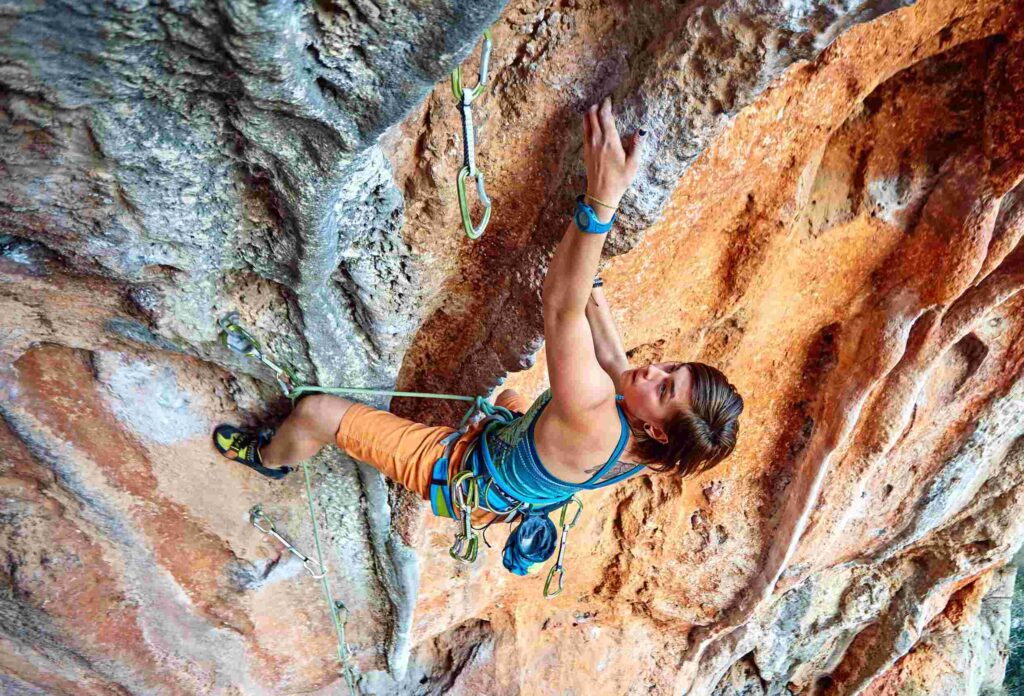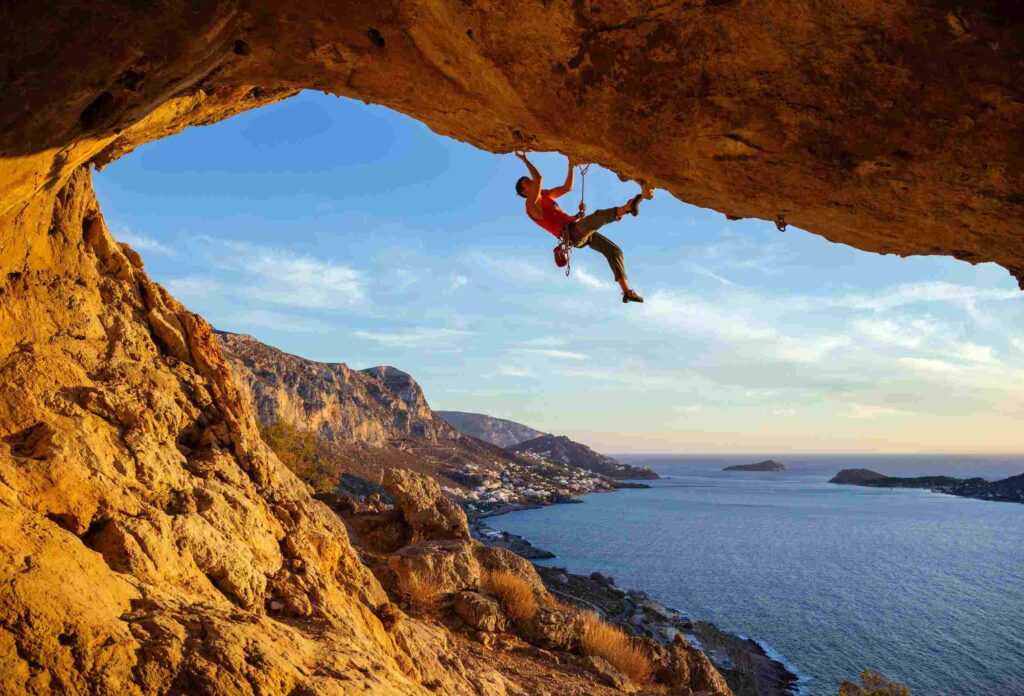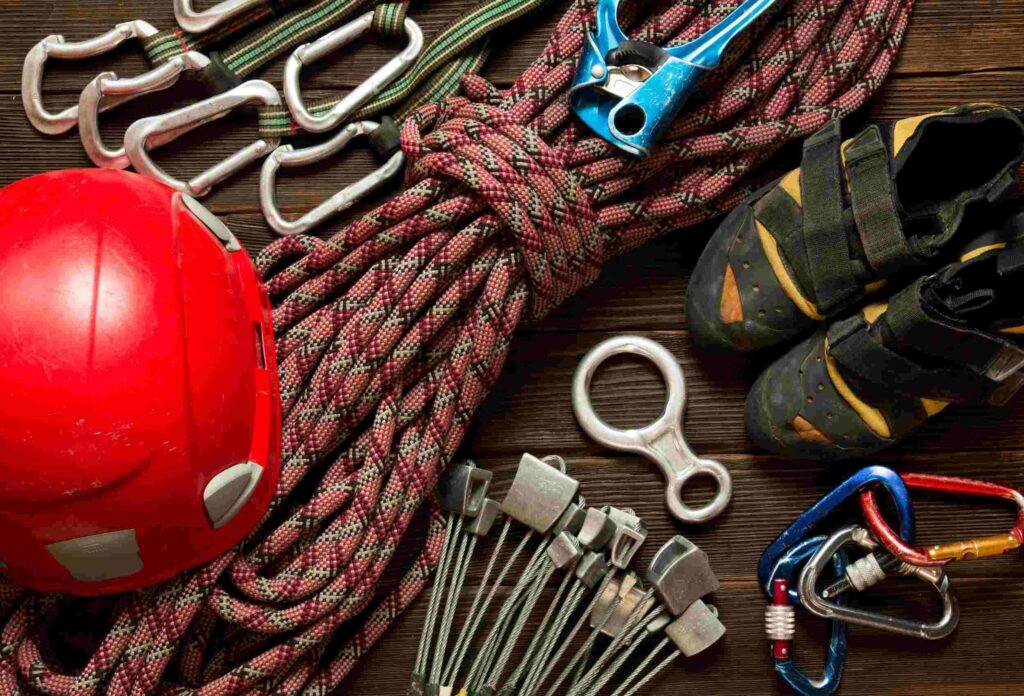Rock climbing travel insurance provides care for the safety and health of athletes. Before going on holiday, whether it’s a single trip or multiple trips, it is necessary to purchase insurance. After all, rock climbing, like any other extreme sport, is not without risks during a sports travel.
Features of Rock Climbing

Rock climbing is a sport that involves ascending mountains or climbing walls using special equipment. It requires athletes to have not only physical but also psychological preparation. During the climb, it is important to maintain calmness and concentration to avoid injuries and accidents.
In addition, rock climbing allows you to experience a powerful adrenaline rush while overcoming obstacles and enjoying the beauty of mountain landscapes.
Despite all the advantages, it is a dangerous sport. Improper use of equipment, carelessness, or any minor mistake can lead to injuries and, in some cases, death. Therefore, before starting, it is necessary to receive training from an experienced instructor, learn how to use the equipment correctly, and get travel insurance including rock climbing, for traveling abroad.
Levels of Difficulty in Rock Climbing Routes
The Frank system is used to classify rock climbing routes and trails. It was developed in 1906 by German rock climber Wilhelm Frank and is still one of the most common systems. According to this system, the difficulty is determined on a scale from 5.1 to 5.18, where 1 represents an easy route and 18 represents a very difficult one. According to the system, the route is assessed based on three parameters: technical difficulty, physical difficulty, and overall difficulty.
Technical difficulty is an assessment of the technical skills required to complete the route. It takes into account the presence of protrusions, cracks, pockets, holes, and other elements that climbers must overcome.

When determining physical difficulty, factors such as route length, height, and any difficulties that affect the amount of physical effort required by the athlete are taken into account.
The overall difficulty of the route is determined by summing up the technical and physical difficulties. Thus, routes can be classified on a scale from 5.1 to 5.18.
Thanks to the Frank system, tourists can choose routes that correspond to their level of preparation and experience. It also helps assess potential risks during the climb. Let’s consider the characteristics of routes offered in different parts of the world:
| Location | Difficulty Level | Angle of Incline | Route Height | Types of Holds | Price (approximate) | Popular Routes | Tourist Rating |
| Joshua Tree, USA | 5.9 | Moderate | 10-30 m | Ridges, cracks, pockets | $50-$100 per day | Muffin Top Double Dip | 4.5/5 4.2/5 |
| Yosemite, USA | 5.11 | Steep | 100-300 m | Small edges, cracks | $100-$200 per day | The Nose El Capitan | 4.8/5 4.6/5 |
| French Alps | 5.8 | Varied | 30-150 m | Protrusions, holes | €50-€150 per day | Aiguille du Midi Les Gaillands | 4.4/5 4.2/5 |
| Kalymnos, Greece | 5.10 | Varied | 15-60 m | Textured grips | €30-€70 per day | Odyssey Grande Grotta | 4.3/5 4.5/5 |
| Chamonix, France | 5.12 | Overhang | 50-200 m | Small edges, cracks | €100-€200 per day | Cosmiques Ridge Frendo Spur | 4.7/5 4.4/5 |
Tips for Tourists

If you plan to go rock climbing during your trip to Australia, Canada, Europe, the United Kingdom, the United States, or any other country, there are several important things to consider.
- Preparation. It is necessary to receive appropriate training, for example, by taking a rock climbing course or attending individual lessons with an experienced instructor. It is also important to prepare your body for intense physical exertion.
- Safety. It is important to follow all safety measures: use only high-quality equipment and check it before use, follow instructions and rules during the climb, and climb with a partner who can assist you in extreme situations.
- Choosing a Climbing Location. It is important to choose only verified and safe places for practicing the sport. Study the characteristics of the area where you plan to go rock climbing in advance and bring the necessary protection.
- Insurance. Rock climbing travel insurance is the main recommendation as it provides financial protection and medical assistance in case of accidents.
By following these tips, you will be able to enjoy the activity and get the maximum pleasure from your trip.
Features of Insurance
Tourist insurance for rock climbing is an essential attribute of any mountain trip. It provides protection against various risks and dangers and allows you to feel confident in your safety. Therefore, before going on vacation, it is necessary to purchase appropriate insurance.
You can explore the options travel insurance for rock climbing coverage online. Insurance companies offer various insurance packages that are selected based on the specific goals and preferences of the client. The cheapest type of insurance includes medical coverage for injuries, while more expensive options may include life insurance, equipment coverage, helicopter evacuation, and more.

Best travel insurance for rock climbing can have different costs. The price depends on many factors, such as the duration of the insurance (single trip or multi-trip) and the level of risk involved in the route. Therefore, before choosing insurance, it is worth carefully studying all the conditions and coverage features. It is also recommended to read reviews from other travelers, as they can help determine the optimal type of insurance.
Annual travel insurance is a cost-effective option for those who frequently travel abroad for extreme sports activities. Such insurance can help save money and provide a high level of protection.
FAQ
Let’s consider frequently asked questions about tourist insurance for rock climbing.
When choosing insurance, it is important to consider not only the coverage and cost of the tourist insurance but also the difficulty of the chosen climbing location. Before making a purchase, it is advisable to read reviews and consult with a specialist from the insurance company.
In the event of an insurance claim, it is necessary to promptly contact the insurance company and report the incident. Then, you need to provide documents confirming the occurrence of the emergency and await the response from the insurer.
Travel insurance that covers rock climbing, depending on the policy, covers various risks, including injuries, equipment damage, liability for causing harm to third parties due to negligence, and more.
